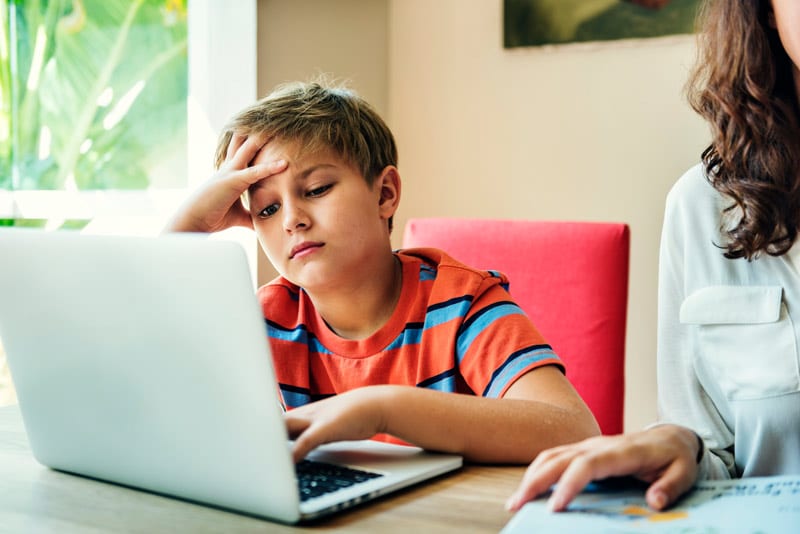A Note from the Editor
With the coronavirus pandemic as the top worry on everybody’s mind these days, we bring you a guest post by a Fairfield County therapist writing about anxiety in the era of COVID-19. Tracey Masella is a Licensed Clinical Social Worker in private practice in Wilton, CT. Kim O’Rielly, the Young Adult Resource Specialist for www.rtor.org, saw her Zoom presentation Dealing With Anxiety During COVID-19 (hosted by Live Girl), and asked her to summarize the main points of her talk in a special guest post for our users.
A mandatory pause is not quite as easy to take as stumbling upon one, but the message is the same – stop. The universe has hit the pause button on our lives as we have known them. We now face the challenge and the opportunity to not only manage this situation effectively but also to emerge differently – rested and quiet and connected, with a new sense of priorities and mindfulness.
So how do we manage this unprecedented situation effectively? We start by acknowledging that the anxiety is real. Fear is one of our most primary emotions, coming from deep in our mid-brain, in a place called the amygdala. The amygdala has one job to do – keep us alive. This part of our brain is constantly on the lookout for anything that might be dangerous – so we can hightail it out of there! – or anything that will give us pleasure – like food, and love, and even beauty – so we will continue to thrive. Anxiety is fear on steroids, mostly because our thoughts become involved and drive up the intensity of the fear. Think about how you feel when you watch the news. Do you feel better or more anxious? Generally, people start thinking, “This is really bad” or “How are we going to make it through this?” or even, “I have to get to the store right now!” These fearful thoughts keep the anxiety going, like gasoline on a fire.
Anxiety hijacks the brain, causing our thinking brain – the frontal cerebral cortex – to shut down, similar to having too many programs open at once on your computer, and staring at the pinwheel of doom that just circles and circles with no solution. When anxiety takes over, even ordinary situations can become life-threatening to our brain. Anxiety also thrives on uncertainty, the unknown future (depression, by contrast, thrives on the past). The coronavirus COVID-19 has all the elements of an anxiety-provoking situation – especially for children. It is potentially life-threatening, doing ordinary things are now potentially dangerous, and we have no idea when this will end.
Okay, so how do we manage our own anxiety and help our kids to manage theirs? First, we need to lower the intensity of the emotion of fear and allow our thinking brain to come back into the picture. The easiest and most effective way is to distract the brain with physical activity, short bursts of exercise lasting three to five minutes. Dancing, jumping jacks, bouncing on a trampoline, balancing, hula hoops, shooting basketballs, tossing a ball against a wall, rolling on the floor with the dog – anything that gets our heart rate going for a physical reason. Chances are your heart is already running a bit higher because of the anxiety, which keeps the brain thinking you are in danger, so we distract the brain from the perceived threat by “making sense” of our higher heart rate. “Oh, I just danced for 3 minutes, so it makes sense I would be out of breath.”
Once the anxiety is less intense, we can check the facts. In a pandemic, it might be problematic to check the big picture facts, so keep it small. What am I, or what is our family doing to stay safe? You can expand that a wee bit to include what your town is doing, what the kids’ school is doing, what your neighbors are doing to stay safe. Check the facts as often as need be, and if any changes need to be made, go ahead and add those to your to-do list. Remember – this is not a conversation to be having when your anxiety is high, because it will be very hard to access the facts in the situation if you are anxious. If you feel your anxiety starting to rise, step back, and do another physical activity.
Here are some other tips for families and parents to help manage the situation:
- Stick to a routine as much as possible. This is especially important regarding sleep. Try to go to sleep and wake around the same time as you did before the quarantine. (Did you know that a sleep variance from one day to the next of three hours or more throws us into jet lag? And it takes seven days to come out of jet lag, which might be right around the time we have another late night – hello, weekend sleepovers!) Attend to your basic hygiene, change out of your pajamas into normal clothes, exercise, eat meals at your regular times.
- Don’t look too far into the future. Plan things for one week at a time. At the end of the week, do a check-in: What worked? What didn’t? What do you have coming up next week? How’s everyone doing? Most things are more bearable if we think about them in smaller increments than months, years, or forever.
- Have reasonable expectations for family time. Introduce new family time activities slowly and incrementally. If you were not a family that had dinner together every night, don’t expect that everyone will be gung-ho to start eating together every night. Start with a couple of nights and build from there. Likewise with family game night or family movie night. Start with once/week if this is a new activity, and build up from there if all goes well.
- Validate your kids’ losses. Let them know you understand what they are thinking, feeling, or doing. Many of them are missing a lot! Think of all the activities our kids are involved with these days – all the milestones that the end of the school year brings. For many of our kids, the last day they were at high school might be their last forever. That’s a tough pill to swallow. This is particularly true for our kids who had to come home from college. Going from being independent at school to living back home with virtually no outlets is super tough! Letting your kids know you understand what they are feeling is important. And don’t use this as a teachable moment in how tough things were when you were growing up or how they should just buck up and stop complaining. Stick with the understanding of how they feel. It goes a long way.
- Continue to let your kids have an appropriate level of independence as best you can. During school hours, let your kids rely on their teachers or school resources, just as they would if they were in the school building. Same with homework: try not to become more involved with your kids’ schoolwork than you were before the quarantine.
- Rules are based on safety concerns. Breaking rules has consequences, both natural and enforced. The current rules are in place to keep as many people as possible safe from getting sick, and we can all do our part by adhering to the rules, even if they are unpleasant. Rules in your home should be about safety always – drinking, driving, drug use, internet use. So please follow the rules for the safety of your family and the community, and please remember to follow rules when we go back to life as usual – even if your kids find them unpleasant.
This will undoubtedly be a time in all of our lives that we will never forget. With some effort, we may just gain some perspective that is often lost in the hustle and bustle of pre-COVID coronavirus life. Stay safe, spend some time daydreaming, and don’t forget to breathe!
About the Author: Tracey Masella is a Licensed Clinical Social Worker in private practice in Wilton, CT (www.traceymasellalcsw.com). Tracey was a member of the clinical staff at Silver Hill Hospital in New Canaan, CT (www.silverhillhospital.org) for ten years, most recently as the Program Manager for the Adolescent Transitional Living Program. She is now a consultant for the hospital. Tracey is trained in Dialectical Behavior Therapy and works with adolescents and adults with mood disorders and personality disorders. She is also the Board Chairwoman of the Medical Relief Alliance, a non-profit organization helping women and children in sub-Saharan Africa who are HIV+ through a micro-finance program (Goat Hope), testing, and education.
The opinions and views expressed in this guest blog do not necessarily reflect those of www.rtor.org or its sponsor, Laurel House, Inc. The author and www.rtor.org have no affiliations with any products or services mentioned in this article or linked to herein.
Recommended for You
- The Truth about Relapse in Addiction Recovery - April 14, 2025
- The Power of Peer Support in Mental Health Recovery - April 10, 2025
- Artificial Intelligence in Anxiety Management: How AI Helps Users Cope with Anxiety Symptoms - April 3, 2025






Wonderful article from a Stamford now remote therapist, trauma therapist, yoga therapist and somatic experiencing Practioner. May we all be safe! Thank you for your wisdom and expertise!
Blessings,
Pamela
Hi Pamela.
Thanks for reading and commenting. This is a good time for all of us to reflect on and tend to our health, safety, and wellbeing.
Jay